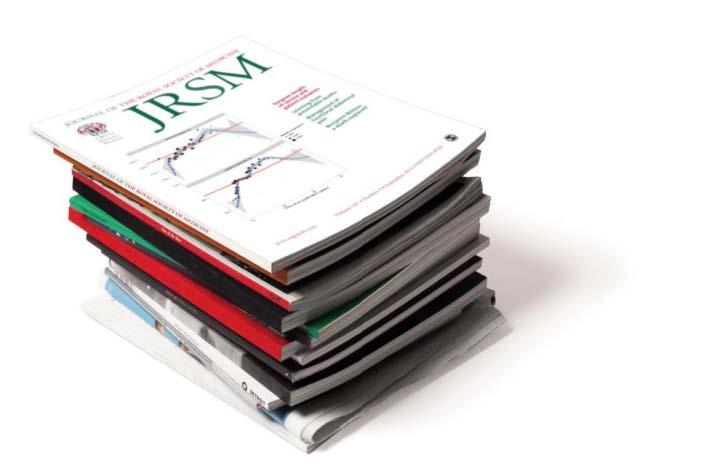The Case of the 125-Pound, Drooling, Snoring, Gassy, Loud and Silly Girl
Most journal case presentations provide building blocks of information. After the initial description, they proceed with the results of diagnostic tests that were ordered.
In 1792, British physician Dr. John Howard advised his colleagues, "The examination of a patient should be made by a medical gentleman of the hospital, with the patient before him, his notes to be corrected by himself… and if anything extraordinary or worthy of more particular notice arises from these sources, let them be published to the world at large."
Publishing medical findings has been the raison d'etre of medical journals since the first English medical journal Medicina Curiosa was published in 1684. There are currently 5,632 medical journals indexed by the National Library of Medicine. At one time, reading medical journals was the principal way in which physicians were able to keep abreast of new treatments, new procedures, new medications and "new diseases." The standard template of a journal article was the "case presentation." Asha Senapati, writing in a journal (nice tie-in for this article), in fact the Journal of the Royal Society of Medicine, observed, "Many diseases, now well recognized, with an established pattern of symptoms and signs started out with the reporting of a single case…."
The case presentation is wellknown to medical students, interns, residents and fellows; it was required at some time for each and every one of them to be able to present their case to the team. They followed the model that appeared in virtually every journal article. "A 22-year-old man presented to the emergency department with a 5-day history of myalgias, cough, dyspnea, nonbillous emesis, and nonbloody diarrhea." "A 57 year old Sri Lankan woman presented with intermittent fever, weight loss, episodic confusion, and alopecia for 3 months…." "We report a 27year-old man with a history of atrial fibrillation, pericarditis, and May-Thurner syndrome who underwent a venoplasty with two self-expandable stents in the left common iliac vein."
Some of the "case presentations" have become classics. "I shall describe an idiot with hair that is not black, as in the real Mongol, but of a brownish colour, straight and scanty. The face is flat and broad, and destitute of prominence." (The first "case presentation" of a child with Down syndrome published by J. Langdon Down, MD,
CASE STUDY: There are currently 5,632 medical journals indexed by the National Library of Medicine. At one time, reading medical journals was the principal way in which physicians were able to keep abreast of new treatments, new procedures, new medications and "new diseases."


"She sits on the bed with a helpless expression. At lunch she eats cauliflower and pork. Asked what she is eating she answers spinach. When objects are shown to her, she does not remember after a short time which objects have been shown…" (First published "case presentation" of Alzheimer's disease published by Alois Alzheimer, MD 1901).
"Case 73, Minnie C. Mother noticed that as soon as the child began to crawl and play it seemed paralyzed on the right side. The right arm and leg can be moved, but they are somewhat wasted, and are the seat of irregular choreic movements whenever an attempt is made to use the arm or to walk." (First published "case presentation" of a child with cerebral palsy, published by William Osler, MD, 1888). As a student of medical history and medical oddities, I was intrigued by the introduction of what I thought would be a most compelling, memorable and significant "case presentation." The article describes a "125 pound, drooling, snoring, gassy, loud and silly girl."
Most journal case presentations provide building blocks of information. After the initial description, they proceed with the results of diagnostic tests that were ordered. It almost appears to be a parlor game, where hints and clues are provided to the group that is trying to guess what the pantomime is suggesting. After the test results are revealed, they continue to offer additional clinical clues. In the case of this presentation they provide that there are "excessive flaps of skin, bright red eyes and a dangling tongue." Readers of Exceptional Parent magazine from both sides of the aisle, parents and providers, have a vast array of experience with syndromes, conditions and disorders that are certainly more challenging and complex than any of the above descriptors. Readers of Exceptional Parent magazine have already learned the lessons that can be learned from this case study. This "case presentation," this example of the "lived experience," is for the rest of the planet— those who don't understand, appreciate or celebrate "exceptionality."
Martha is the 125-pound, drooling, snoring, gassy, loud and silly girl. She is a threeand-a-half year old Neapolitan Mastiff who was recently crowned the winner of the 2017 World's Ugliest Dog contest. Now in its 28th year, the contest serves as a "testament that all dogs do not have to meet AKC pedigree standards to be man's (or woman's) best friend. The owners of all kinds of dogs are also all kinds of people, from youngsters to senior citizens, each proud of their pet despite missing fur, crossed eyes, duck waddles or mismatched ears. They proudly walk both pedigreed pooches and Heinz 57 mutts down the red carpet to the cheers and clapping of the crowd." Many of the contestants have been rescued from shelters and puppy mills. The contest demonstrates that regardless of their physical features they are first and foremost, loving companions. The tag line of the contest is, "If you have a dog that is more beautiful on the inside than the outside, then this beauty contest is for you." I hope my wife reads this… because she is quickly noticing that my skin has folds, I sometimes snore, drool, act silly and yeah, produce gas. Wonder if Martha has a sibling we can adopt. She sounds exceptional. Case closed. •

SKIN DEEP: Martha, the World's Ugliest Dog for 2017 and "testament that all dogs do not have to meet AKC pedigree standards to be man's (or woman's) best friend."
ANCORA IMPAROIn his 87th year, the artist Michelangelo (1475 -1564) is believed to have said "Ancora imparo" (I am still learning). Hence, the name for my monthly observations and comments. — Rick Rader, MD, Editor-in-Chief, EP Magazine Director, Morton J. Kent Habilitation Center Orange Grove Center, Chattanooga, TN